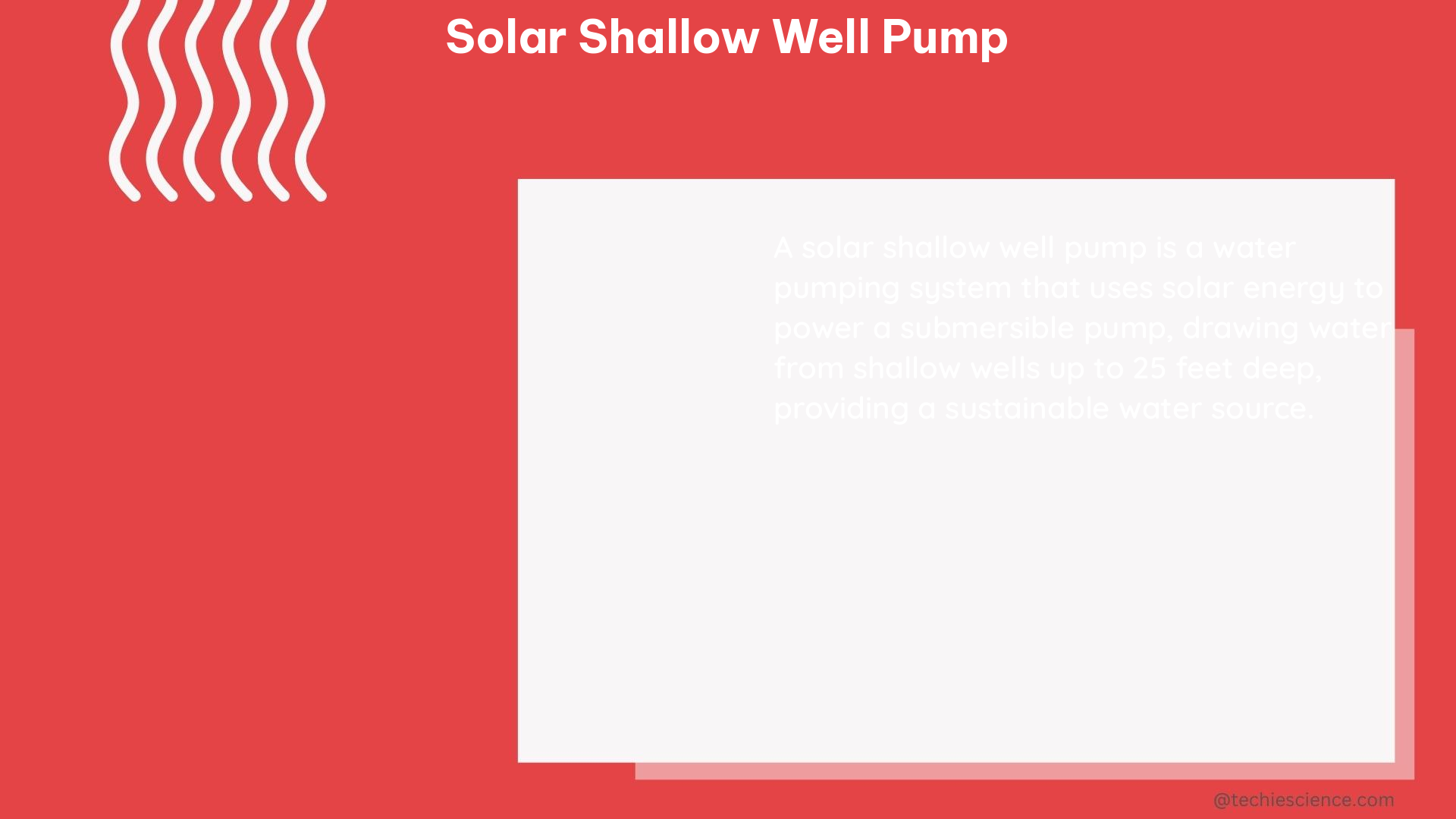Solar shallow well pumps are an efficient and environmentally friendly solution for pumping water from shallow wells, especially in remote or off-grid locations. These pumps utilize solar panels to convert sunlight into electricity, which is then used to power the pump motor, eliminating the need for fossil fuels or grid connections.
Pump Type and Specifications
Shallow well pumps are designed for wells with a depth of up to 25 feet. They are typically centrifugal pumps, which use a spinning impeller to create suction and push water to the surface. The pump’s performance is characterized by its flow rate, measured in gallons per minute (GPM), and the maximum lift or head, measured in feet (ft).
For example, a common shallow well pump may have a flow rate of 5-10 GPM and a maximum lift of 25-35 ft. The pump’s power consumption, typically ranging from 0.5 to 2 horsepower (HP), will determine the size of the solar panel and battery required for the system.
Solar Panel Selection

The size and number of solar panels required will depend on the pump’s power consumption and the amount of sunlight available in the location. As a rule of thumb, a 100-watt solar panel can generate approximately 30-50 Ah of charge per day, depending on the insolation values (kWh/m2/day) for the region.
For instance, in Little Rock, Arkansas, the average insolation is 3.88 kWh/m2/day in February. To calculate the required solar panel capacity, consider the pump’s power consumption, inverter efficiency, and the number of days of autonomy needed.
For a 1 HP (746 W) pump, you would need approximately 1,000 watts of solar panel capacity to provide enough power for a day’s operation, assuming an inverter efficiency of 85% and a 50% depth of discharge (DoD) for the battery.
Battery Selection
Deep-cycle batteries, such as lithium-ion or absorbed glass mat (AGM) batteries, are commonly used to store excess solar energy for use during periods of low sunlight. The battery capacity should be sized based on the pump’s power consumption, the number of days of autonomy required, and the battery’s depth of discharge (DoD) rating.
For example, a 12V, 100Ah deep-cycle battery can store 1.2 kWh of energy (100Ah x 12V x 0.85 for inverter efficiency x 0.5 for 50% DoD). This battery could power a 1 HP pump for approximately 1.5 hours before needing to be recharged by the solar panels.
Inverter and Controller
The inverter converts the DC power stored in the battery to AC power, which is used to operate the pump motor. Inverters should have a high surge capacity to handle the starting load of the pump motor, typically 2-3 times the rated power.
A charge controller is used to manage the charging and discharging of the battery, preventing overcharging and deep discharging. The charge controller should be sized to handle the maximum current output of the solar panels and the pump’s power consumption.
DIY Installation Considerations
Installing a solar shallow well pump system can be a rewarding DIY project, but it requires careful planning and consideration of the following factors:
Site Assessment
- Evaluate the available sunlight, the well’s depth and water level, and the distance between the well and the location where the pump and solar panels will be installed.
- Measure the well’s depth using a weighted tape measure or a well sounder. Ensure the pump’s maximum lift capacity is suitable for the well depth.
- Assess the solar irradiance in the area using online tools or local weather data to determine the optimal orientation and tilt angle for the solar panels.
System Design
- Based on the site assessment, design the system considering the pump’s power consumption, the solar panel capacity, battery size, and inverter specifications.
- Use online calculators or consult with solar experts to determine the appropriate system components and their sizing.
- Ensure the system is designed to meet the daily water demand and provide sufficient autonomy during periods of low sunlight.
Component Selection
- Choose high-quality components that are compatible with each other and suitable for the application.
- Select a pump with the appropriate flow rate and head capacity for your well and water usage requirements.
- Opt for solar panels with a high efficiency rating and a warranty to ensure long-term performance.
- Choose a deep-cycle battery with a high DoD rating and a charge controller with the necessary features and capacity.
Installation
- Follow the manufacturer’s instructions for installing each component, ensuring proper wiring, grounding, and safety precautions.
- Secure the solar panels in the optimal orientation and tilt angle to maximize solar energy capture.
- Properly install the pump, ensuring it is level and the suction pipe is free of air leaks.
- Connect the electrical components, such as the battery, charge controller, and inverter, according to the system design.
- Test the system thoroughly to ensure it is functioning correctly and make any necessary adjustments.
By following these guidelines and leveraging the technical specifications provided, you can successfully design and install a reliable solar shallow well pump system for your off-grid or remote water needs.
References
- SOLAR WATER PUMPS: TECHNICAL, SYSTEMS, AND BUSINESS CONSIDERATIONS, https://pdf.usaid.gov/pdf_docs/PA00SZZ3.pdf
- How to size battery and panels to run my well pump, https://forum.solar-electric.com/discussion/352536/how-to-size-battery-and-panels-to-run-my-well-pump
- Solar-Powered Water Pump Systems for Stockwater Design, https://www.nrcs.usda.gov/sites/default/files/2022-10/ND%20Technical%20Note%201%20-%20Solar-Powered%20Water%20Pump%20Systems%20for%20Stockwater%20Design_1.pdf

The lambdageeks.com Core SME Team is a group of experienced subject matter experts from diverse scientific and technical fields including Physics, Chemistry, Technology,Electronics & Electrical Engineering, Automotive, Mechanical Engineering. Our team collaborates to create high-quality, well-researched articles on a wide range of science and technology topics for the lambdageeks.com website.
All Our Senior SME are having more than 7 Years of experience in the respective fields . They are either Working Industry Professionals or assocaited With different Universities. Refer Our Authors Page to get to know About our Core SMEs.